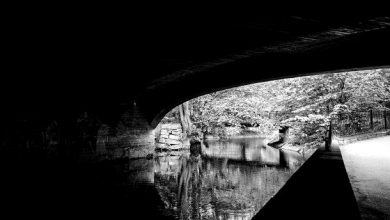
Lines Written In Early Spring was published in 1798 in “Lyrical Ballads”, a collection of poems by Wordsworth and Samuel Taylor-Coleridge. This collection is widely acclaimed as the beginning of the period of English Romanticism. Lines Written In Early Spring follows the themes frequently found in Wordsworth’s poetry – of his love for nature, and the way man’s life relates to it.
In this case, he laments how man has twisted the beautiful life they were meant to have into a system that the majority of men do not even enjoy. Nature is inextricably linked to humanity, but humanity has destroyed the joy that is its birthright. This theme is brought out by the juxtaposition of the happiness of the birds and flowers, with the contemplation of how man has ruined humanity.
This 24-line poem is split into 6 quatrains, which are stanzas containing four lines each. The rhyme scheme is ABAB, and this is the usual rhyme scheme used for a ballad. However, Wordsworth deviates from this a little bit in certain stanzas and also employs slant rhyme. In this type of rhyme, the words have similar sounds but do not sound identical. Still, the majority of the poem does exhibit the perfect ABAB rhyme scheme.
Lines Written In Early Spring | Summary And Analysis
Lines Written In Early Spring | Analysis, Lines 1-4
I heard a thousand blended notes,
While in a grove I sate reclined,
In that sweet mood when pleasant thoughts
Bring sad thoughts to the mind.
The poem begins in an idyllic space, with the speaker relaxing within the beauty of nature. He lies down within a group of trees (grove) and enjoyed how the world around him lived in such harmony. These pleasant thoughts, unfortunately, easily led to sorrowful thoughts.
The “thousand blended notes” is our first hint about the unity and harmony of nature. All the sounds in the grove, the birdsong, the rustling of the leaves, and hundreds more worked together in a perfect blend that was pleasing to the ear. This put the speaker into a good mood, and this good mood gets him thinking about sad things. In the recognition of beauty, he was reminded of the things that oppose this beauty, or do not fulfil it as expected.
In this stanza, we can see an occurrence of slant rhyme, also called half rhyme, near rhyme, or oblique rhyme. The rhyme scheme is ABAB, and while “reclined” and “mind” rhyme perfectly, the words “notes” and “thoughts” are only similar sounds, not identical. The slant rhyme opposes the unity and harmony that is mentioned in this stanza, as it is a slightly discordant sound. This is a sort of foreshadowing for what is to come later on in the poem. The discordance of the slant rhyme symbolises the discordance between nature and humanity.
Lines Written In Early Spring | Analysis, Lines 5-8
To her fair works did Nature link
The human soul that through me ran;
And much it grieved my heart to think
What man has made of man.
Nature created many beautiful things on Earth, and humanity is linked to all of this. The soul that runs through mankind is directly linked to the creations of nature. Yet, this understanding induced sadness in the poet as he realised how man failed to emulate the beauty of nature. The existence of humanity is not separate from the existence of the blessings of nature. Humanity is meant to be intertwined and intermingled with the works of nature. The poet grieves as he thinks about how man has corrupted themselves and brought about mountains upon mountains of injustice, poverty, cruelty, and so on.
Nature is personified as a being that creates “fair works” and links the soul of the poet to her creations.
Lines Written In Early Spring | Analysis, Lines 9-12
Through primrose tufts, in that green bower,
The periwinkle trailed its wreaths;
And ’tis my faith that every flower
Enjoys the air it breathes.
The bower, which is a pleasant garden, is described as being green as it is full of the beautiful creations of nature. The periwinkle plant is a groundcover, which means that it grows near the ground and spreads out a lot. It weaves itself through the primrose plants and both still flower majestically. The poet sees this and believes that every flower in that garden fully enjoys the lives that they live.
The garden has a sort of unity and camaraderie. The periwinkle intertwined itself with the primrose, yet neither suffocated the other. There are no borders or restrictions made by the flowers in the garden, and they accept each other without hesitation. This is opposed by humanity, who have created thousands of imaginary borders, and confine people to one place or another. This unity does not exist between men as humanity has corrupted the harmony that they were meant to enjoy. The poet had full surety that all the flowers enjoyed the life they lived. They exhibit happiness and strength, and truly enjoyed being alive, relishing the air they breathed. This is representative of the clean, crisp, delicious air of freedom and security that man has lost.
Here, we can see slant rhyme used again in “wreaths” and “breathes”. These do not perfectly rhyme but are similar enough to work in the poem’s rhyme scheme. Again, it brings about a slight discordance, which juxtaposes the content of the stanza. The stanza speaks of unity, and the rhyme displays a total lack of harmony.
Alliteration is used in “my faith that every flower”.
Lines Written In Early Spring | Analysis, Lines 13-16
The birds around me hopped and played,
Their thoughts I cannot measure:—
But the least motion which they made
It seemed a thrill of pleasure.
The birds in the garden are carefree and joyful, playing around and moving as they pleased. The poet had no way of reading their minds or measuring how they feel. Yet, every small move they make showed how much they loved their life, and enjoyed their freedom. The birds lived in such bliss that they do not even need to speak, as their actions portray their feelings. Actions speak louder than words, and the blithe air of the birds spoke volumes about their contentment.
The poet uses more examples of things that nature provides to represent how man does not partake in them. The birds in the woods have no worries and no pain, and they live an untroubled life. In contrast, it would be difficult to find a single man who truly lives an untroubled life, and this shows how much man has deviated from the plan that Nature set out for them. Man is linked with these creations and is supposed to enjoy life as these creations do. Yet, humanity brought forth pain, suffering, and cruelty upon itself, and fell off the path of unity and harmony.
Lines Written In Early Spring | Analysis, Lines 17-20
The budding twigs spread out their fan,
To catch the breezy air;
And I must think, do all I can,
That there was pleasure there.
As it was spring, there was a dawn of new life in that grove. Twigs were growing anew, and they stretched out to feel the cool air in the garden. Spring is a time for renewal, as what was buried by the wintery cold is revived by the warmth of spring. The budding of the twigs shows that nature is continuously growing and evolving, and each new addition gladly partakes in the existing harmony.
The same air that the flowers unquestionably loved to breathe is the air that the twigs stretch out to catch. It represents security, freedom, and unity among the creations of nature. Based on the knowledge that the poet already has, it is clear to him that these twigs are also living in bliss. They find pleasure in their growth, as opposed to the anxiety of mankind and the troubles of their lives.
Here, the twigs are personified, as they are said to independently fan themselves out to catch the breeze in the garden. They are capable of undertaking action, and thus the device of personification is seen.
Lines Written In Early Spring | Analysis, Lines 21-24
If this belief from heaven be sent,
If such be Nature’s holy plan,
Have I not reason to lament
What man has made of man?
The poet realises that this faith he has, the belief that flowers and trees truly feel joyful in their growth, is sent from heaven. He knows that it is true, so it must be the Holy plan of nature. The life of man is linked to the desire of nature, so it is clear that man is also supposed to have this life of pure enjoyment, and no fear of the days that come. They were meant to really enjoy the air they breathe, contrary to the stress and anxiety that plague the world. With this understanding, Wordsworth sees the loss that man has brought upon themselves.
Mentioning that it is a “holy plan” shows that it is not merely a physical corruption, but a loss of a spiritual covenant. Humanity twisted themselves into a maze of suffering while nature provided them with a beautiful route of bliss. Man made a population of people who worry, stress and do not have the time or energy to really enjoy being alive for any significant amount of time.
The line “What man has made of man” is repeated to emphasise that the poet’s thoughts are not really on the beauty of nature, but instead on the state of man in relation to nature’s boons. The sad thoughts that came to the poet in his pleasant mood are the laments that he has about man’s place in the world, and how the system and society we have built do not line up with the expectations that nature set out for us. This question is asked as a rhetorical question, and the answer is never directly given in the poem. The question does not need to be answered, as numerous problems come to mind when this question is posed.
Lines Written In Early Spring | About The Poet
William Wordsworth is hailed as one of the founders of English Romanticism. In his poetry, he reflected his fierce love for nature, and he insisted on using only common language to make his poetry universal. His early life was spent surrounded by earth’s natural beauty, and this brought about his love for nature and man’s relationship to it.
In his time, Wordsworth was one of the most criticised poets and faced great contempt from several literary reviewers. However, thanks to the publication of ‘The River Duddon’ in 1820, he became more widely accepted as a poet, to laypeople and critics alike.
His first poem ‘An Evening Walk’ was published in 1793, quickly followed by ‘Descriptive Sketches’. Some of his famous poems are ‘Daffodils’, ‘The Solitary Reaper’, and ‘Tintern Abbey’.
William Wordsworth died on 23 April 1850, in the United Kingdom.



